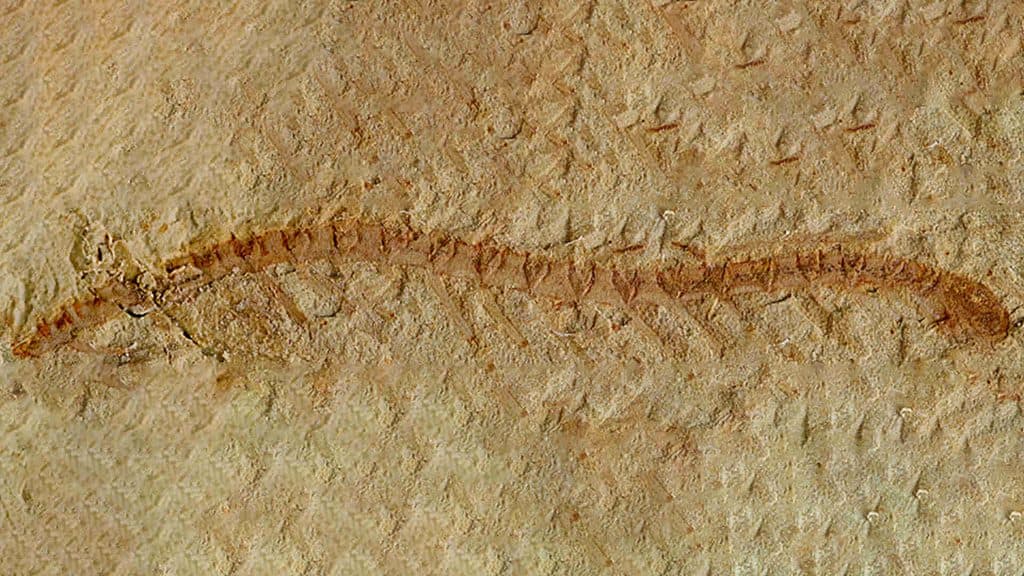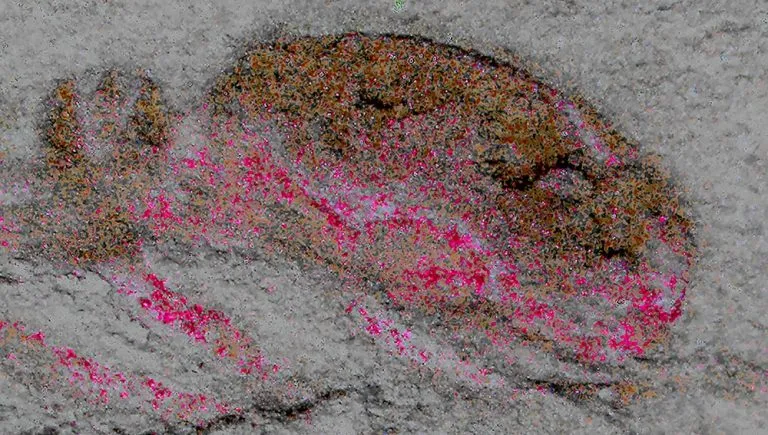Scientists were revisiting the 525-million-year-old fossil of a tiny sea creature first unearthed in 1984 in China’s southern Yunnan province when they came across an unexpected discovery. Paleontologists were stunned to find that the ancient creature’s brain was also fossilized, an exceptionally rare occurrence, especially for a fossil this old. In fact, it may very well be the oldest brain fossil ever found — and that’s far from all.

Neuroscientists led by Nicholas Strausfeld from the University of Arizona and Frank Hirth from King’s College London zoomed in on the fossilized brain of the extinct arthropod and, to everyone’s surprise, found a segmented nervous system in the animal’s trunk. Meanwhile, the head and brain of the animal lacked any sign of segmentation.
This is a much bigger deal than it might sound at first and could rewrite what we know about the origin and composition of the brain of arthropods, which includes insects, arachnids, and crustaceans.
“This anatomy was completely unexpected because the heads and brains of modern arthropods, and some of their fossilized ancestors, have for over a hundred years been considered as segmented,” Strausfeld said.
“From the 1880s, biologists noted the clearly segmented appearance of the trunk typical for arthropods, and basically extrapolated that to the head,” Hirth said. “That is how the field arrived at supposing the head is an anterior extension of a segmented trunk.”

The newly inspected fossil, of a wormlike animal called Cardiodictyon catenulum, shows that the heads of some of the earliest arthropods weren’t segmented at all, nor were their brains. It follows that the brain and the trunk nervous systems must have evolved separately.
Cardiodictyon catenulum was alive more than 500 million years ago, around the time of the Cambrian period, a turning point in life’s evolutionary history that saw the most intense period of evolution and is the time when most of the major groups of animals first appear in the fossil record. Given its primitive nervous system arrangement, scientists think that armored lobopodians (the group Cardiodictyon catenulum belongs to) were probably the earliest arthropods, predating even the iconic trilobites, the most diverse group of animals preserved in the fossil record, which went extinct some 250 million years ago.

The researchers not only identified the brain of Cardiodictyon, a challenging feat in and of itself that required a special technique called chromatic filtering that isolates different wavelengths of light from high-res images to map internal structure but also compared it with those from other known fossils and living arthropods.
The comparative analysis could link specific anatomical features to gene expression patterns, suggesting that a shared blueprint of brain organization has been maintained from the Cambrian until today, a truly remarkable feat of continuity.
“By comparing known gene expression patterns in living species,” Hirth said, “we identified a common signature of all brains and how they are formed.”
The researcher added that three of Cardiodictyon‘s brain domains are each associated with a characteristic pair of head appendages and with one of the three parts of the anterior digestive system.
“We realized that each brain domain and its corresponding features are specified by the same combination genes, irrespective of the species we looked at,” added Hirth. “This suggested a common genetic ground plan for making a brain.”
As for the findings’ implications for vertebrates, such as humans, the researchers say that there may be some important connections. For instance, the brains of mammals and other vertebrates show a similar distinct architecture in which the forebrain and midbrain are genetically and developmentally distinct from the spinal cord.
Animals like Cardiodictyon eventually gave rise to the world’s most diverse group of organisms, the euarthropods — invertebrates with jointed legs like ants and spiders.
The findings were reported in the journal Science.


